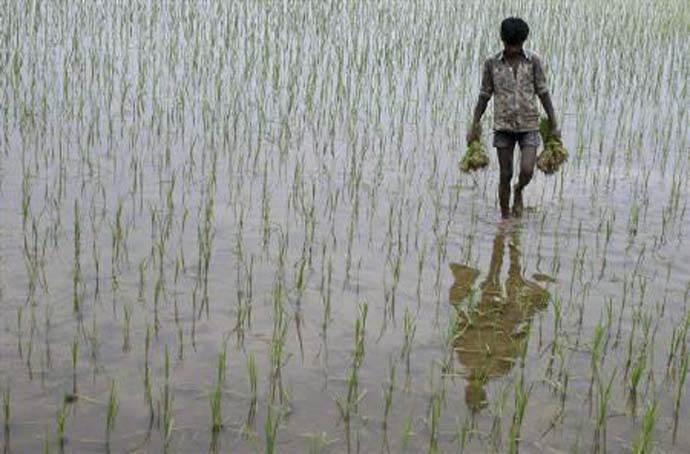Why Haryana doesn't want its farmers to grow rice

In order to save its fast depleting water table, Haryana is disincentivising the cultivation of paddy.
A major shift is happening in agriculture in northern India. For decades now, Haryana and Punjab have been counted among India’s top rice and wheat-producing states. The two northern states contribute almost 15 per cent of the nation's entire rice production. The Haryana government is working on changing these statistics.
Farmers of Punjab and Haryana were at the forefront of the Green Revolution, that played a key role in making India self-sufficient in the production of food grains. The endeavour saved millions of Indians from dying of hunger. The phase started in the 1960s. Growing of wheat (winter-sown crop) and paddy (a summer-sown crop) was the key focus during this phase. Steadily, Punjab and Haryana came to be regarded as the biggest contributors to the Indian food grain kitty.
In the last few years, it has been increasingly realised that this grand position comes with a huge cost. About 3,000 to 5,000 litres of water is consumed to produce one kg of rice in the northern states, depending upon the paddy variety, soil type, and the time of sowing. Paddy production in Haryana jumped from 39.89 lakh tonnes in 2014 to beyond 45 lakh tonnes in 2019. With this, the number of tube wells in Haryana also shot up from a few thousand to eight lakh, resulting in overdrawing of groundwater.

The water table fell so alarmingly that the government had to declare 64 blocks in the state as dark zones. Wells in these areas have dried up. Farmers in these areas cannot dig a new borewell without taking permission from the state government.
In such a scenario, widespread cultivation of paddy defies wisdom. Paddy needs massive water input for production, leaving both Punjab and Haryana water deficit. In order to save its fast depleting water table, Haryana is disincentivising the cultivation of paddy. The state government recently announced the Mera Pani Meri Virasat scheme to move the farmers away from paddy. It has further announced that it shall provide Rs 7,000 per acre to farmers to push them towards the cultivation of maize and pulses, which need less water.
Haryana knows that moving farmers away from paddy cultivation shall be an uphill task. For many years now, agriculture experts and the state governments have been stressing on the need for diversification of the crops to break the wheat-paddy cycle in Punjab and Haryana. Ironically, it is the government policy on Minimum Support Price (MSP) that has ensured that farmers have not moved away from the paddy-wheat cycle. What has further made them dependent on this cycle is the acceptance of demand for an increase in MSP by the Centre almost every year.
Paddy cultivation is sucking Haryana’s water table dry. The state is fighting to turn the tide on the depleting water table. It has been realised for the last few years that paddy is the culprit in state’s numerous “dark zones” where the water table is alarmingly low.
These are zones where the water table has fallen to a critical level. The pace of groundwater recharge is slow. In these areas, the rate at which water is being drawn is much more than the pace at which it is being recharged. In the last two decades, the farmers have pumped out much as 74 per cent of the groundwater reservoirs in Haryana. Agriculture Department has warned that if overexploitation of the water continues, parts of Haryana will turn into a desert in the coming years.
Farmer leaders say that the state government’s announcements may not woo farmers away from paddy, as farmers need more incentives to shift to pulses and oilseeds. Chaudhary Pushpendra Singh, President Kisan Shakti Sangh has said that the government must substantially increase the promised incentive of Rs 7,000 so that farmers shift to other crops. He said that if the government increases the incentive to Rs 20,000 per acre and also raises the MSP by 15-20 per cent, farmers may be swayed towards sowing crops which are less water-guzzling. It is also important that the government ensures prompt procurement of these crops after harvesting so that farmers are not dissuaded from growing them.
Haryana is persuading farmers to grow coarse food grain, oilseeds, and pulses. Apart from bringing relief to Haryana’s poor water table, these crops offer other benefits such as less pollution due to zero crop-residue burning, providing cattle fodder via oil cakes, resolving India’s dependence on import of edible oil and fixing nitrogen in the soil.

